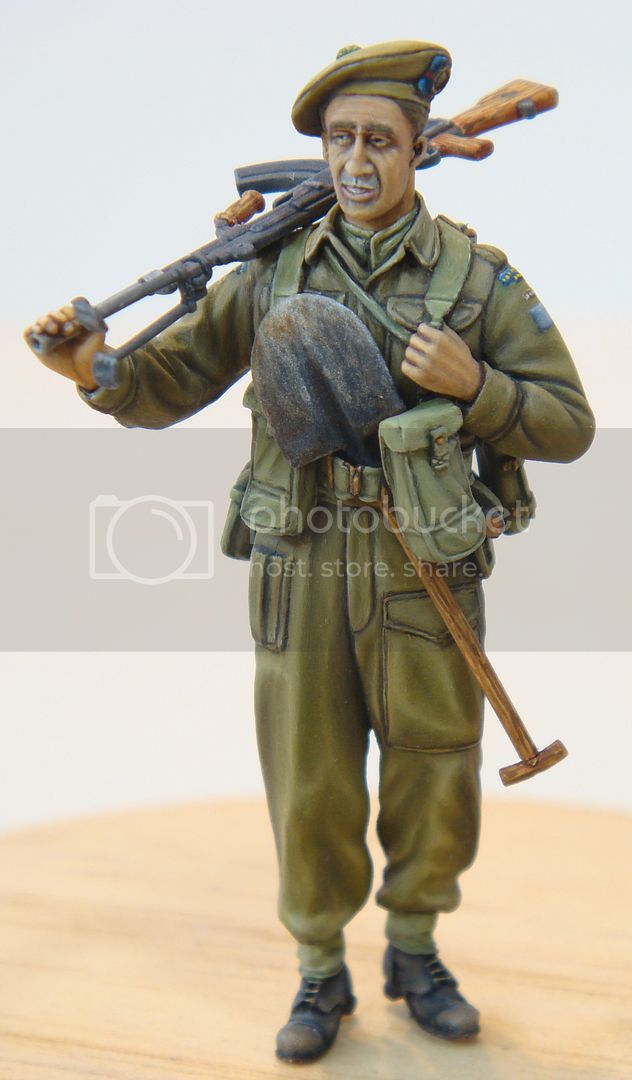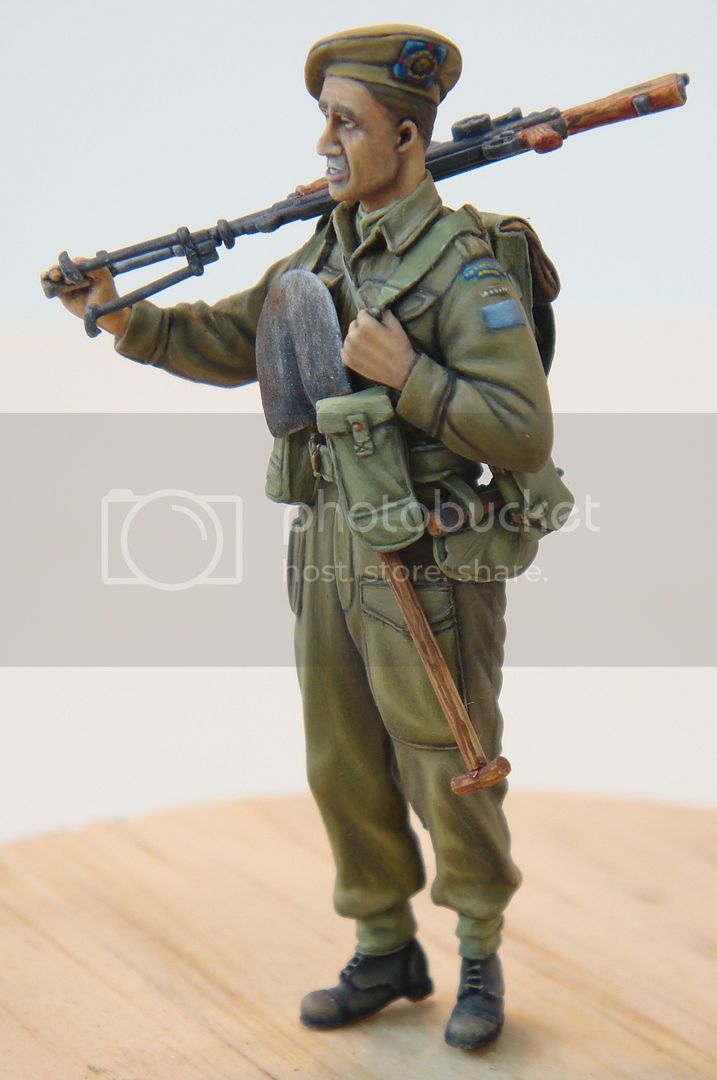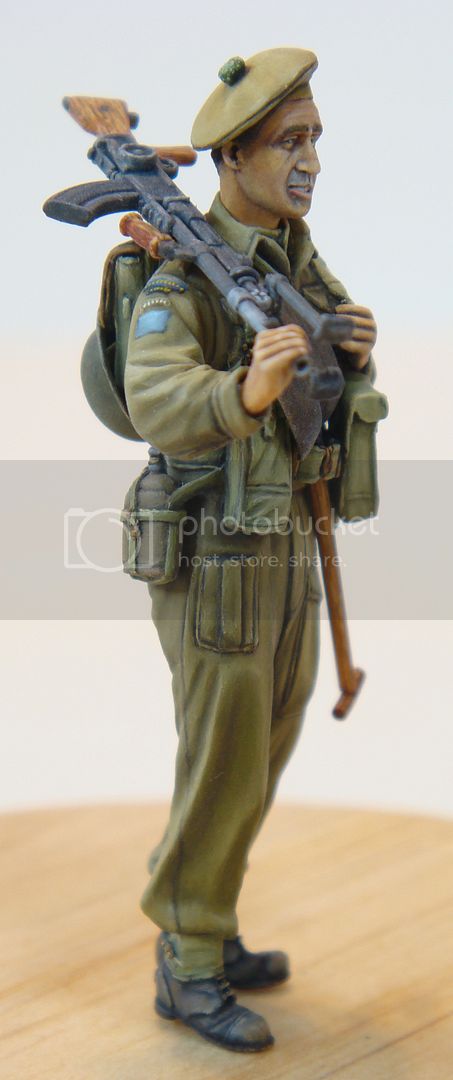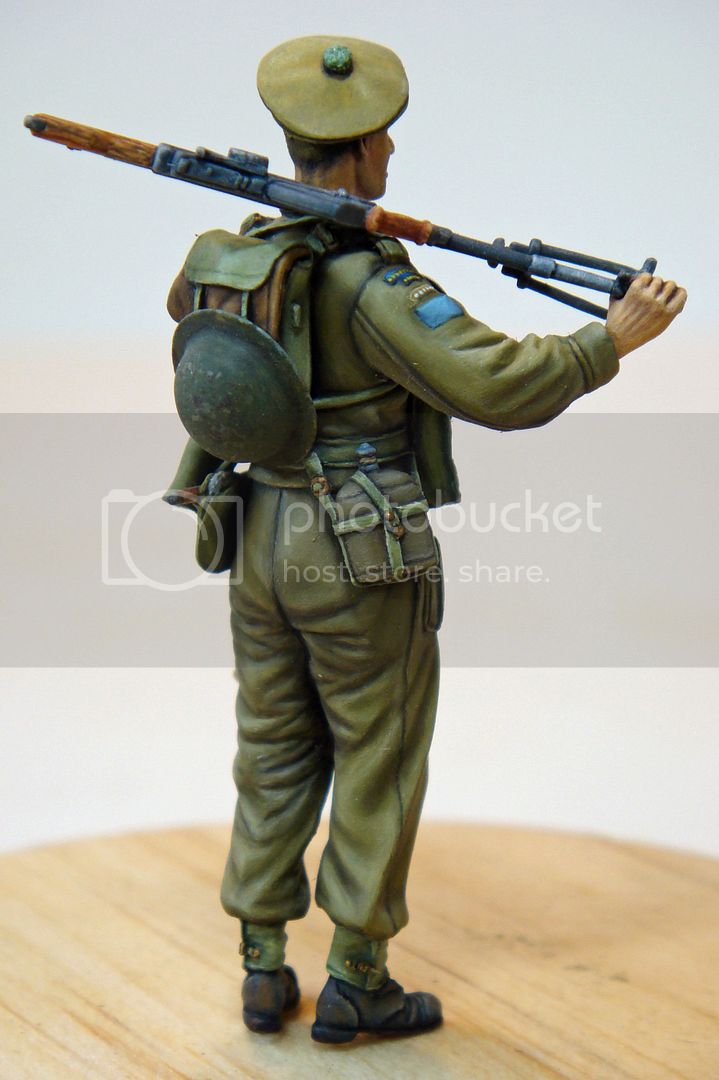Quoted Text
Great looking figure, I love your approach to shading and highlighting... you keep it more subtle than what the trend is today. Can you offer some pointers on painting flesh tones? ...
Mario
Thanks, Mario!
I paint using a more "classic" method than is popular today. Today, most guys use acrylics and a glazing technique.
I use artist oils, blended wet-on-wet. I do apply the oils over acrylic undercoats, but the color coats you see on the figure are all oils.
I use flat white for a primer, and then completely undercoat the figure, to include the details, with acrylics that are close to the desired final colors. The undercoating allows me to use very thin coats of the oil colors without blending through to the primer. Keeping the oil color coats as thin as possible is one of the keys to using oils on miniatures.
The oil paints are very "rich" and blending uniform colors is really quite easy. The working time with the oils allows for nice and subtle transitions between shadows, mid-tones, and highlights.
In regards to the flesh tones, I mix a basic flesh using Titanium White, Yellow Ocher and Burnt Sienna. These are mixed at a ratio of about 4:2:1 respectively.
I use Burnt Umber for the shadows and more white to the basic flesh for the highlights. A touch of Burnt Sienna is added for the warm and sunburned areas.
A touch of Alizarin Crimson is blended into the basic flesh for the lower lip which then gets a touch of white for a highlight.
I use a "whiff" of Payne's Gray blended in along the jaw line, chin and mustache areas for the 5 o'clock shadow look.
I use a general blending technique for flesh tones that was first (AFAIK) pioneered by Mark Bannerman and which is described in detail in his Osprey book, "Modelling Panzer Crewmen of the Herr."
This technique starts with a wash of the Burnt Umber on the flesh areas. The thinners are allowed to dry out, and then the basic flesh tone is blocked in on all the high points.
This is then blended with the Burnt Umber to establish the dark shadows, shadows and transition to the mid-tone flesh color. The umber oil paint will still be wet enough to blend even after the thinners have evaporated.
More of the basic flesh is added to the high points and blended with the shadow transitions to "purify" the mid-tone areas.
Highlights are added by adding white directly onto the highlight areas and blending it directly into the mid-tone (basic) flash color.
Burnt Sienna is added directly onto the areas where warmer skin tones are desired and again blended directly into the flesh tones already on the face.
The lower lip is painted and highlighted separately.
Any 5 o'clock shadow areas are done the same way by adding the Payne's Gray directly onto the face and blending it in to the existing flesh colors.
The main "innovation" of this "Bannerman" technique is that it keeps the amount of actual oil paint that has to be applied to the figure to the smallest amount possible. So, the shadows, highlights, warm tones, etc, are blended directly on the figure and not mixed on the pallet and then applied.
The general flesh tone can be varied easily by changing the ratios of the basic three colors. Also, I use lighter or darker acrylic undercoats on the flesh areas to add some variety between figures.
The whites of the eyes are either Payne's Gray or Indigo mixed with white and the pupils are usually Ivory Black.
Hair is usually a blend of Raw Umber, Yellow Ocher, and Ivory Black. For lighter brown or blond hair I just use Raw Umber and Yellow Ocher. (You can get creative and add a touch of blue to the shadows for really light blond hair if you're careful not to get too green.)
Of course, with just a little internet research, you can find literally dozens of oil paint flesh mixes and variations for different ethnic skin tones.
These are just my "cave man" color mixes, but they work for me.
I have a number of build blogs here, all with figures painted using these techniques:
Armorama::Canadian Firefly with NNSH Figures Armorama::StuG IV Early to Late Conversion with WH Figures in Winter Camouflage Armorama::Italian Ariete Figures North Africa Armorama::Universal Carrier Mk.I with Crew I think there are a lot of photos in these blogs that show the level of acrylic undercoating and some SBS photos on the oil paint blending. The Italian figure blog has a SBS showing an alternate method to block in the dark shadows using a oil wash (similar to the technique used for the face and hands).
Anyways, if you have any specific questions, I'll be happy to try to answer them.
Happy modeling!

































